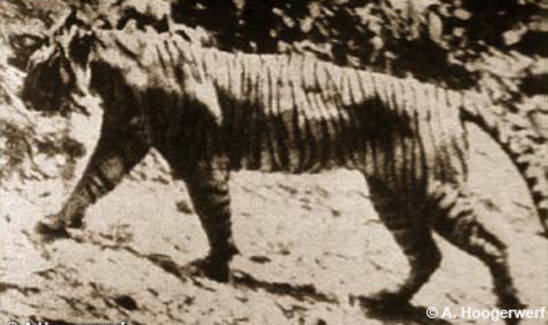Tiger
Javan tiger (P. t. sondaica)
According to the revised taxonomy of the Felidae, the tiger subspecies Panthera tigris sondaica includes also the subspecies Panthera tigris balica and Panthera tigris sumatrae.
The Javan tiger has been extinct since the early 1980s due to hunting and habitat degradation and loss. Already by the 1940s, the Java tiger was eliminated from most of the island of Java and by 1970 was restricted to Meru Betiri II reserve. Tigers were last observed in Meru Betiri in 1976. The extirpation of the Javan tiger was partly attributed to the Dutch agricultural revolution from the late 1800s on the Island of Java. Tigers and other wildlife declined as forested areas, alluvial plains and river basins were converted for agriculture. Much of the extensive monsoon forest areas, where tigers had lived in east Java, were converted to teak plantations. This monoculture cashcrop cultivation significantly reduced the prey biomass contribution to the tiger’s diet and hence the adult breeding tigers faced starvation. In the 1920s and 1930s a system of reserves was established in Java but by the mid-1960s tigers survived in only three of these reserves. By 1970, tigers could only be found on the southeast coast known as Meru-Betiri. By the 1980s, no signs of tigers living in Meru-Betri were found.

- This photo was taken in 1938 in Ujung Kulon.

